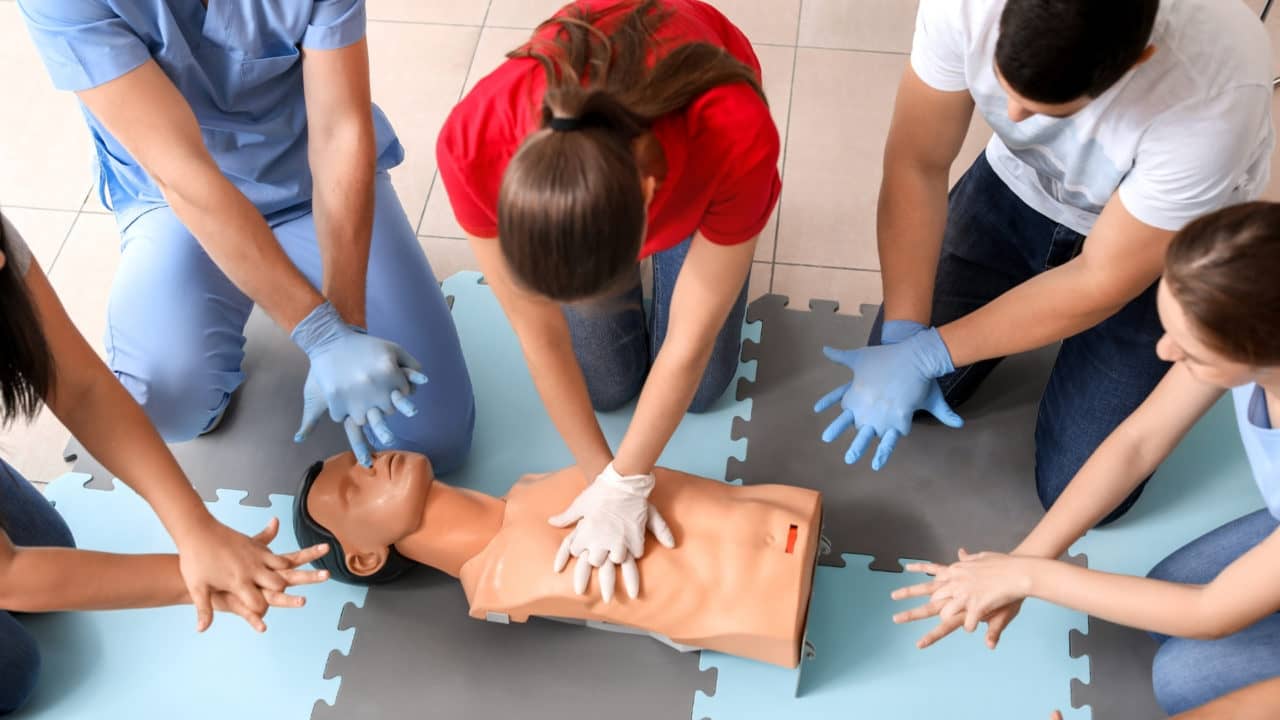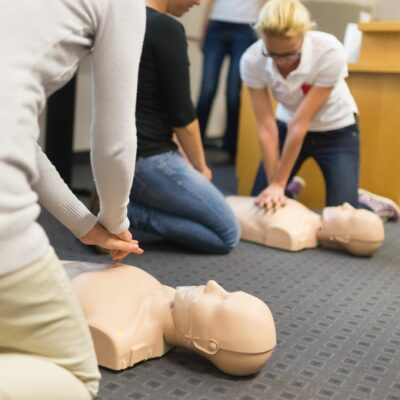Introduction
Cardiopulmonary resuscitation (MOUTH-TO-MOUTH RESUSCITATION) is a lifesaving strategy that everybody ought to know. Nonetheless, regardless of its essential significance, many misconceptions border CPR methods and accreditation. Numerous people might hesitate to get licensed due to these misunderstandings, which can eventually set you back lives in emergency scenarios. This short article aims to disprove prevalent myths about Go to the website CPR while emphasizing the relevance of getting licensed via approved first aid courses By recognizing the realities, you can equip on your own and possibly conserve a life.
Common Misunderstandings About mouth-to-mouth resuscitation and Why You Must Obtain Certified
What Is CPR? Recognizing the Basics
CPR means cardiopulmonary resuscitation, a procedure created to bring back breathing and flow in a person who has stopped taking a breath or whose heart has ceased beating. The strategy involves breast compressions incorporated with fabricated air flow strategies such as mouth-to-mouth breathing or utilizing a bag-mask device.
- Key Components of CPR: Chest Compressions: These help maintain blood flow to crucial organs. Rescue Breaths: These provide oxygen to the lungs. Automated External Defibrillator (AED): A device that can surprise the heart back into rhythm in case of certain heart arrests.
Misconception 1: Only Doctor Can Execute CPR
One typical myth is that only skilled doctor can execute CPR successfully. While doctor are definitely competent at it, anyone can learn https://squareblogs.net/gebemeryjr/your-guide-to-hltaid011-first-aid-courses-in-the-community how to perform CPR with CPR courses
- The Reality: Laypersons can be educated to provide effective CPR. Basic techniques are simple and can be grasped by anyone happy to learn. Bystanders commonly play vital duties in conserving lives prior to specialist assistance arrives.
Misconception 2: mouth-to-mouth resuscitation Is Only Helpful for Heart Attack Victims
Another prevalent misconception is that mouth-to-mouth resuscitation is entirely for people experiencing cardiac arrest. Actually, mouth-to-mouth resuscitation can be useful in different emergencies.
- Other Circumstances Where mouth-to-mouth resuscitation Works: Drowning incidents Drug overdoses Choking sufferers where the air passage has actually been compromised
Misconception 3: You Must Stay Clear Of Offering Rescue Breaths
Many people believe rescue breaths are unneeded and even unsafe because of the risk of infection or various other issues. This stems from complication concerning exactly how COVID-19 might impact these practices.

- The Truths: Rescue breaths are necessary for offering oxygen. During circumstances like sinking or opioid overdose, rescue breaths come to be crucial. Hands-only mouth-to-mouth resuscitation is suggested when someone is untrained or reluctant but understanding both techniques continues to be vital.
Misconception 4: You Can Not Damage A Person by Carrying Out Mouth-to-mouth Resuscitation Incorrectly
While it holds true that carrying out CPR inaccurately may trigger some harm, not attempting it at all may bring about fatality. Child Care First Aid Courses Near Me
- Understanding the Threats: Rib cracks might take place throughout aggressive breast compressions. Any activity taken is far better than not doing anything; modern-day standards stress that "something" is much better than "nothing" during heart attack situations.
Misconception 5: As soon as You're Educated, You Don't Required Further Training
Some people believe that as soon as they've finished a training course, they do not need additional training or recertification.
- Why Recurring Training Matters: Techniques progress over time based on new research. Regular refresher courses keep your skills sharp and guarantee you're current with current best practices.
Misconception 6: Children Don't Required CPR Training
Parents commonly assume they won't need to carry out mouth-to-mouth resuscitation on their children due to the fact that children don't experience heart events as often as adults do.
- The Truth for Moms and dads: Children can struggle with respiratory concerns, choking cases, or drowning circumstances requiring immediate attention. Learning pediatric-specific methods makes sure readiness during emergencies entailing children.
Importance of Getting Certified in First Aid and Mouth-to-mouth Resuscitation Courses
Why Qualification Matters in Emergency Situations
Being accredited in first aid and CPR provides several advantages past just discovering life-saving abilities:
- Enhances self-confidence when facing emergencies Increases awareness of safety protocols Encourages even more people to progression in emergency situation scenarios
Benefits of Taking a First Aid Course
Comprehensive Ability: Participants discover not nearly mouth-to-mouth resuscitation but additionally standard first aid concepts such as injury care and managing fractures. Legal Security: Accreditation typically features Good Samaritan regulations security when assisting a person during an emergency. Career Opportunities: Many tasks need first aid qualification as part of their security methods; being certified boosts employability in areas like training, mentoring, health care, and childcare.FAQs About Common Misconceptions Concerning CPR
FAQ 1: What kind of training do I need for effective CPR?
You must enroll in recognized CPR courses that cover both adult and child resuscitation techniques effectively.
FAQ 2: Just how frequently must I restore my first aid certificate?
It's recommended to restore your first help certificate every 2 years given that standards transform regularly based on arising research.
FAQ 3: Is hands-only compression better than standard CPR?
For inexperienced spectators or those unpleasant offering rescue breaths, hands-only compression is effective yet understanding both approaches supplies a higher possibility of survival if educated properly.
FAQ 4: What sources are available for learning more about first aid?
Numerous companies use on the internet resources together with physical courses; credible platforms include the American Heart Association and Red Cross web sites which information first aid courses offered near you.
FAQ 5: Exist any kind of age constraints on taking a first aid course?
Most first aid courses welcome individuals of all ages; nevertheless, some specialized classes might be tailored toward particular age groups (e.g., kids vs grownups).
FAQ 6: Does my office require me to get certified?
Certain workplaces-- particularly those including public interaction-- usually call for workers to have legitimate certifications in first aid and fundamental life support (BLS).

Conclusion
Understanding the truth behind common misunderstandings about CPR is crucial for boosting recognition about this life-saving method. Whether you're a moms and dad wishing to secure your kid or a staff member looking for certification for professional improvement, obtaining licensed with appropriate first aid courses arms you with the knowledge essential for acting emphatically throughout emergencies. Keep in mind-- anybody can learn exactly how to carry out effective mouth-to-mouth resuscitation regardless of background; do not allow misunderstandings prevent you from coming to be equipped! So why wait? Join today for a CPR course!
This detailed overview seeks not just to resolve myths surrounding CPCR however additionally acts as an encouragement for everybody to look for qualification so they too can add positively during emergencies!
